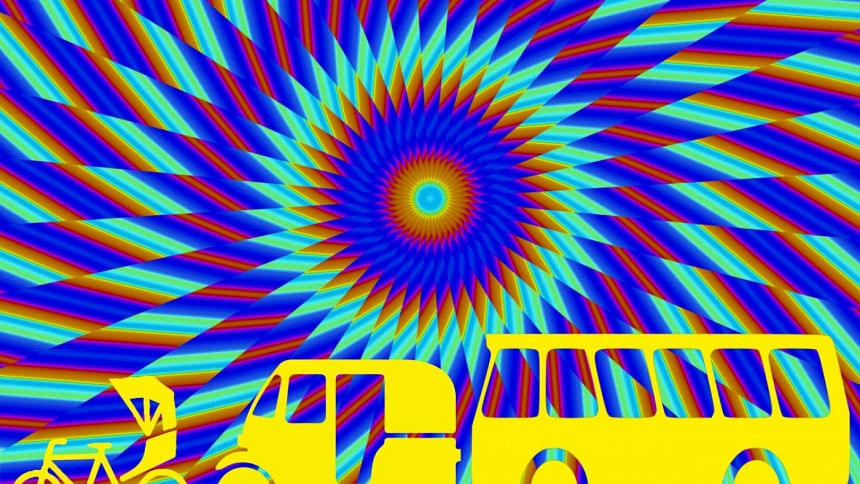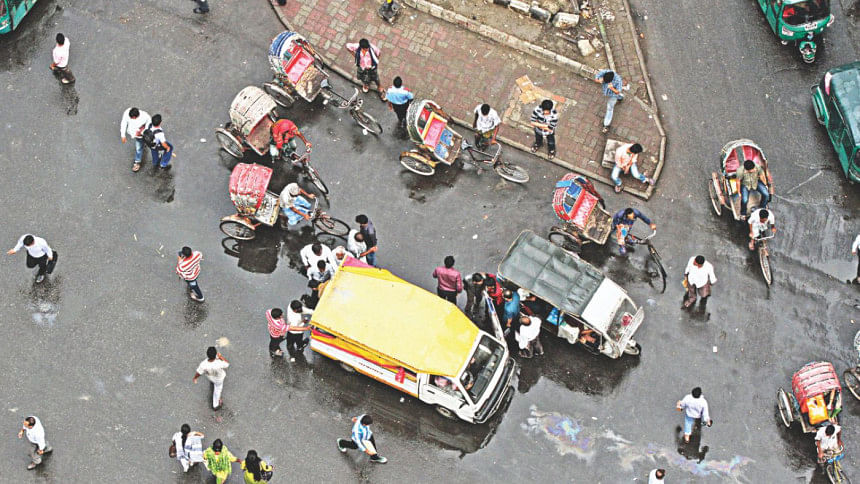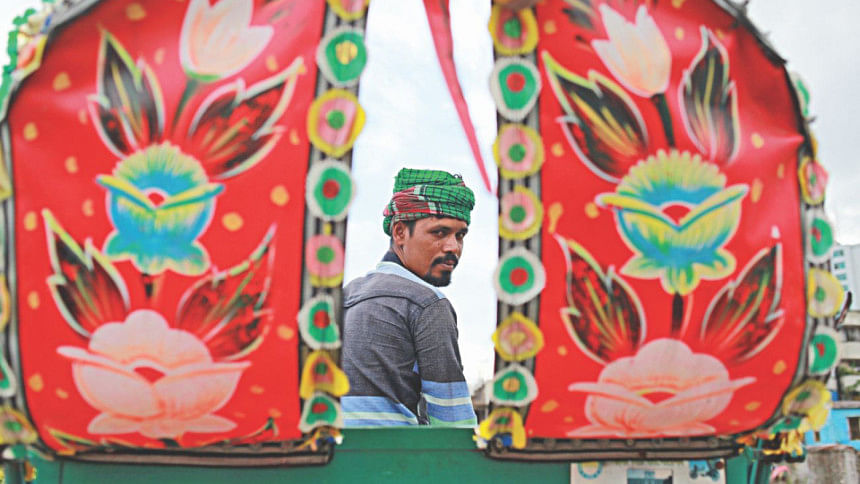How to move about in Dhaka

With Dhaka's traffic situation worsening with each passing day, having an extended idea of the transportations available pays off. It can save time or offer possible shortcuts to beat the traffic and reduce the commute time.
In the past few months, the alternatives have truly multiplied and the horizons continue to expand as more services are introduced. This has not only provided newer ways of getting around but also given a wider variation across a range of budgets. Here's a comprehensive guide that breaks down the options and sheds light on Dhaka's transport system, and there's something for everyone and every budget.
BUS
When it comes to bus services, Dhaka offers two kinds: "local" bus (lovingly called the "muri'r tin") and "sitting service". The former doesn't involve purchasing of tickets, allow passengers to stand (or hang onto the door) and usually have cheaper fares. The latter charge a higher fare and promise to only take passengers until their seats are filled but in reality, they operate quite identically to local buses. All in all, buses provide one of the most affordable means of commuting in this city. A one-way bus journey costs between Tk 5 and Tk 60.

It is possible to reach most areas by bus; although, at times the route may have to be broken down into several separate vehicles. Apps like Dhaka Wheels (finding buses and their routes) and Google Maps (checking up on the state of traffic along the routes) can help in planning efficient ways of getting to your destination. Some areas, such as Cantonment and Gulshan, due to restricted movement, may have their own services. Dhaka Chaka operates within the Gulshan area – between Gulshan 1, Gulshan 2 and Baridhara. Cantonment has several bus services that cover the cantonment area and connected or nearby vicinities.
TEMPO
Tempo or human haulers are one of the fastest ways to travel as they are smaller and fill up faster. There are tempos that run on various routes and, recently, bigger vehicles and new routes have been added, greatly improving the service. The only problem with tempos is that they do not cover long routes as buses do, requiring the journey to be broken down into at least two tempo rides. However, in most cases, the routes are connecting so it is possible to find another tempo or alternatively a bus to complete the remainder of the journey. Unlike buses, tempos are harder to avail during more extreme weather conditions but are sometimes more preferable during summer. An individual tempo ride costs between Tk 5 and Tk 20.
CNG
CNG-run auto rickshaws or "CNG" are probably the best option when you're in a rush. Due to their small size and the fact that they do not have designated routes, they can take shortcuts and weave through the traffic faster. While haggling for lower fare is an issue, the introduction of on-demand rides (discussed later) has made finding an affordable CNG ride an easier process. Despite the competition, CNGs continue to be one of the most used mediums of transportation. It's best to get an idea of how much to expect to pay or bargain towards before getting a CNG and also to avoid paying what the metres show as they're usually faulty. Although we're supposed to pay the fare according to what the metre shows, it's rarely an option. In some areas, there are also informal "shared" CNG services where you can hop in for a negligible fare around some designated routes. Be warned that these may prove to be dangerous around early mornings or after dark. While CNGs do cost significantly more than the previous two options, they're a great alternative when you have an urgent matter to attend and it's worth the money. On average one has to be ready to spend a minimum of Tk 100 on this transport.

RICKSHAW
If there's any form of transport that Dhaka is unimaginable without, it's the rickshaw. It's both a beloved means of getting around and the most annoying one to deal with when behind the wheels. Amidst the struggles of our love-hate relationship, the rickshaw continues to remain popular all over the city. Whether it's to get to a destination a block away or miles away, there's a way to get to most areas on a rickshaw. This customised ride is also extremely convenient during hartal and times of trouble, not to mention during public holidays and floods. It's no wonder that it's become a fabric of the pop culture in our country.
RIDE-SHARING SERVICES
The newest addition to Dhaka's transport system are the on-demand ride/ride-sharing services. Currently, the options include cars, motorcycles and taxis. I'm sure more options will slowly be made available on the popular platforms and new companies will help expand the market and push down the prices. On-demand services are still relatively more expensive than other transports available but they've definitely made a huge difference in how we commute. Unless you've been living under a rock, you've most likely given either Pathao or Uber a try but if you haven't, it might be worth giving both a try since they both include cars and bikes in their offers. There are many issues that need to be addressed in this category but it's a good thing that there are changes coming our way. Their impact becomes obvious considering how the names of these services have come to be used as verbs now.

TRAIN
The intercity trains will have to suffice until we get the metro rail. If you live near a station it might be a great idea to find out train schedules. Although trains are said to be unreliable in terms of schedules here, it might still be faster and more reliable than other transport on certain days in the city. Trains are great when you have to get from one end of the city to another since their route is shorter and will cut across some areas of congestion. It's pretty cheap and you won't waste a minute sitting in traffic!

WATER TAXI
The water taxi service is currently limited to the Hatirjheel- Gulshan area and is one of the lesser known services available. The transport runs on several different routes and covers quite a vast area. It can be something enjoyable or an option for daily commutes since it's cheap. These water taxis can be availed from Badda, FDC and Gudaraghat and can be boarded upon purchase of tickets.
Plenty of new services are being introduced or are on their way to being introduced. While there's no alternative to fixing our utterly broken traffic system, the introduction of more transport services with a wide range of options are surely changing how we get around this city.
PHOTOS: DARSHAN CHAKMA & ORCHID CHAKMA
Nooha Sabanta Maula is a recent Anthropology graduate who is assessing the impact anthropologising has had on her life. Send her your thoughts and feedback to [email protected]

 For all latest news, follow The Daily Star's Google News channel.
For all latest news, follow The Daily Star's Google News channel. 



Comments